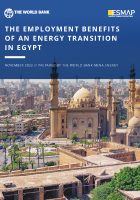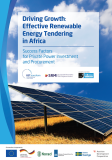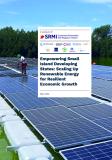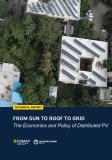Publications
This report investigates the job creation potential of the clean energy transition that has gained momentum over the past years in Egypt. The estimation is based on the Clean Energy Employment Assessment Tool (CEEAT), an Excel-based input-output model that can stimulate the economywide net direct, indirect, and induced employment impacts of clean energy technology pathways. In the case of Egypt, CEEAT is calibrated for five such pathways: utility-scale solar; industrial solar; rooftop residential solar; utility-scale wind; and energy efficiency of buildings. Achieving Egypt’s targets for these technologies is expected to deliver a positive benefit of around 2 million net job-years over the 30-year period through 2050, equivalent to an average of 67,000 additional new job opportunities per year. This is 0.2 percent of the 29 million labor force and 2.2 percent of the unemployed in 2020. The results can be much larger if the innovation rate is increased, alongside the share of local content in manufacturing, and other clean energy technologies are leveraged. The early results of the analysis showcase important benefits of striving for a sustainable energy pathway, even for an emerging economy. Not only would jobs be gained, which could inform future strategies for workforce development, but some jobs would be displaced, or possibly shifted. A just transition framework is thus needed to mitigate any negative impacts and maximize the employment co-benefits of a green economy.
World Bank.
The Employment Benefits of an Energy Transition in Egypt (English). Washington, D.C. : World Bank Group. http://documents.worldbank.org/curated/en/099040012072216853/P17054604e29d008a0b91e056926cbfc7ab




